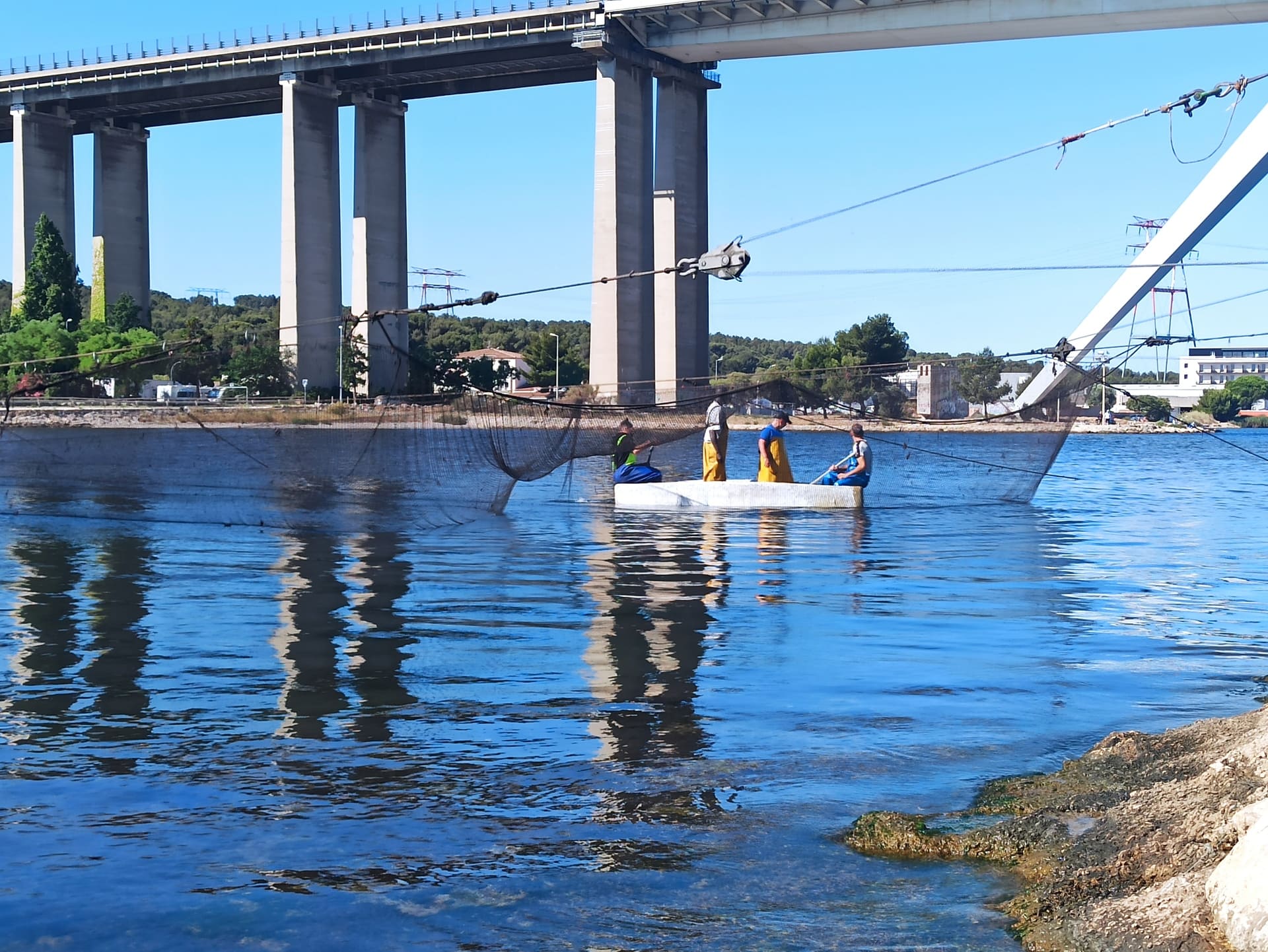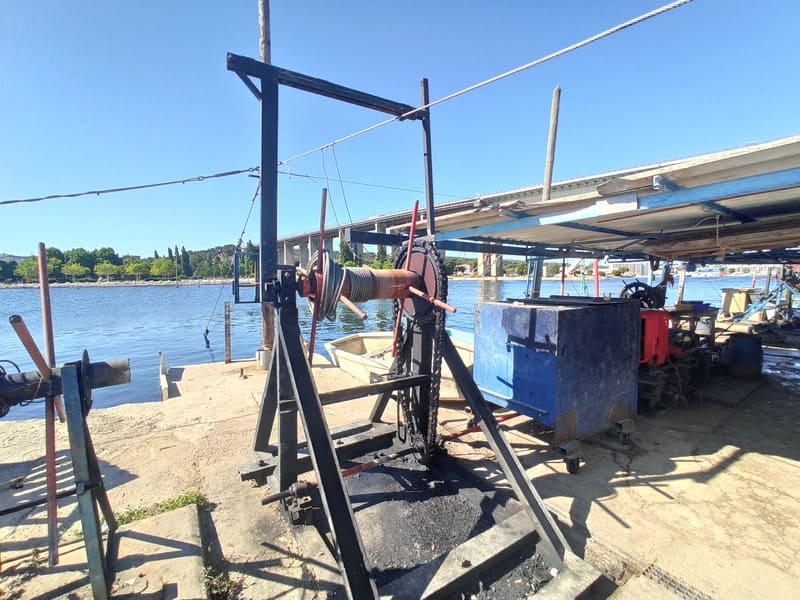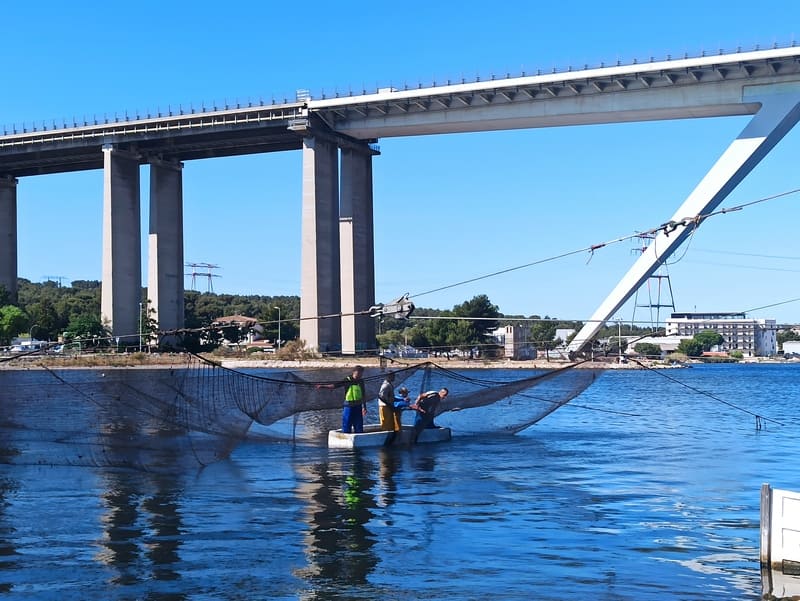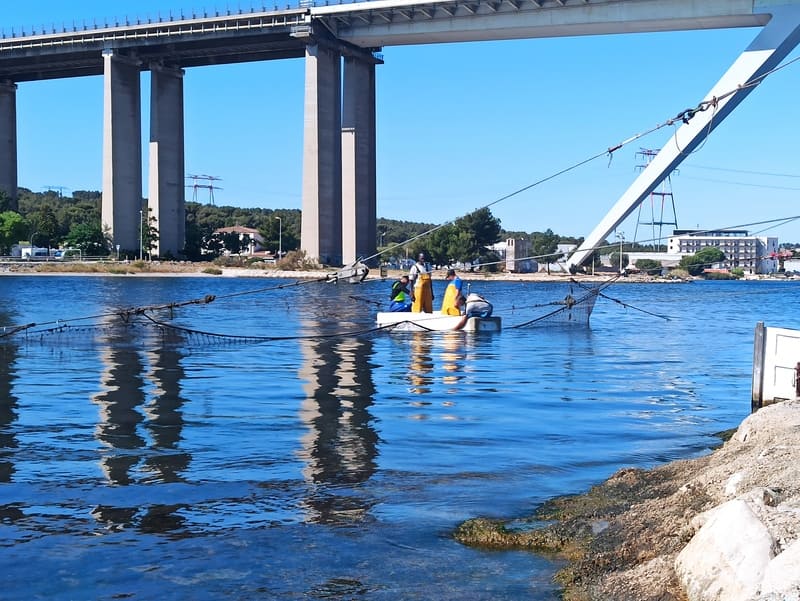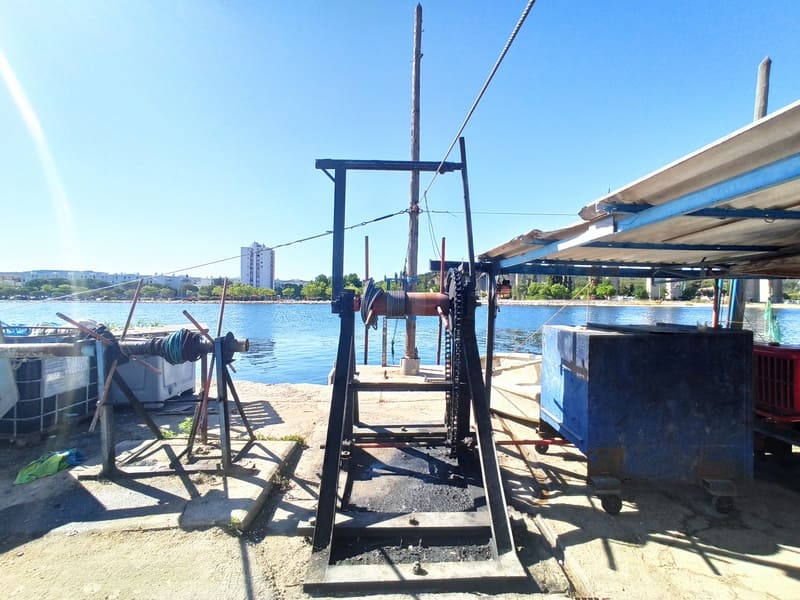Calen de Martigues
For centuries, the bourdigues, fixed fishing establishments, have been built at the entrance to the Caronte pond and on the canals of Martigues. After the abolition of the gabelle, tax on salt, by the Revolution, the bourdigues will gradually be replaced by saltworks.
After the disappearance of the bourdigues, to continue to benefit from the passage of the fish, calens are installed all along the Caronte channel without hindering navigation. As soon as schools of fish are spotted, a huge net that lies on the bottom of the water is picked up. It is a large net which bars the Caronte Canal across its entire width. Fixed on each side of the channel by stakes, the net is raised when passing schools of fish. It is especially the poutarguiers mullets (female mullet or mullet) that are captured. Bottarga is a type of caviar made from salted and dried mullet roe. At the time it was not considered a luxury delicacy, but today it has become martgal caviar, prized by great chefs.
At the end of the 19th century, the rudimentary and entirely manual apparatus was fitted with cotton net. As this method of fishing developed widely at the start of the 20th century, Prud’homie imposed a drawing of lots to secure the best places. From 1922, the winches were no longer operated by hand, but with a gasoline engine. Installed between the banks, the calen is a net 115 m long and 12 m high, made up of 36 mm meshes. Considered an armament, just like a ship, the calen is under the responsibility of owners and sailors each having a share. Those who retire sell their share. This mode of fishing involves monitoring canal traffic.
The operation of this net requires a foothold, they are small huts, where the nets are stored. In Martigues, these very rudimentary installations were located, not far from the salt works. Between the Arles à Bouc canal and Martigues there were more than ten calen. The last calen of Port de Bouc having closed, only that of Martigues remains in the Caronte channel. The last vestige of ancestral and artisanal fishing, the calen, which signified the rigged net, now designates by extension both the installation and its mechanism, and the hut that houses the tools and the site on the territory.
✓ Le Calen in a few words
• The Calen designates a fishing net from the French Mediterranean, a traditional martégale fishing, a fisherman's hut where we practice calen fishing, a Provencal oil lamp.
• The fishermen fish in Calen by passion. It is also a valued martégale tradition.
• The arrival of factories at the beginning of the 20th century and the enlargement of the canal forced this type of fishing.
• The catches are more important in the summer because it is the spawning period (reproduction) of the mullets / mules which go up towards the pond.
✓ Learn more about the poutarguier muge
• The muge adapts to the territory of Martigny because it can go from salt water to brackish or even fresh water. It also adapts to port infrastructures and takes advantage of organic waste.
• The pecou is a piece of fish flesh that allows the eggs to hang and dry them.
• In the 17th century, the town of Martigues offered bottarga to the Marquis de Vauban (register of the town's deliberation of March 13, 1686).
✓ Le Calen in a few words
• The Calen designates a fishing net from the French Mediterranean, a traditional martégale fishing, a fisherman's hut where we practice calen fishing, a Provencal oil lamp.
• The fishermen fish in Calen by passion. It is also a valued martégale tradition.
• The arrival of factories at the beginning of the 20th century and the enlargement of the canal forced this type of fishing.
• The catches are more important in the summer because it is the spawning period (reproduction) of the mullets / mules which go up towards the pond.
✓ Learn more about the poutarguier muge
• The muge adapts to the territory of Martigny because it can go from salt water to brackish or even fresh water. It also adapts to port infrastructures and takes advantage of organic waste.
• The pecou is a piece of fish flesh that allows the eggs to hang and dry them.
• In the 17th century, the town of Martigues offered bottarga to the Marquis de Vauban (register of the town's deliberation of March 13, 1686).



